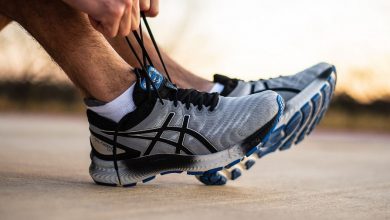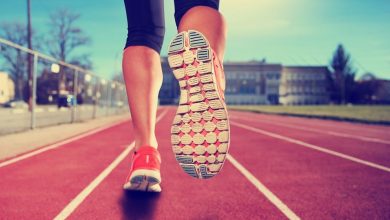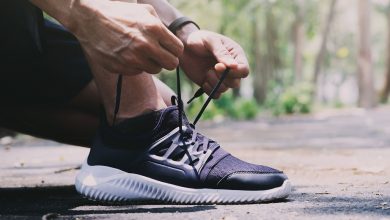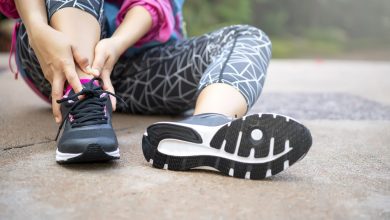Cross country running shoes are an investment made by the runner. These shoes are designed to protect the runner’s feet during grueling training routines and give them the ability to run on a variety of varied surfaces. This is important considering that most runners will run up to 120-miles a week just during training and will have to be able to run on soft dirt, gravel, and other such surfaces. That’s why we’ve decided to review some of the best cross country shoes, so all of our readers will have access to the shoes that will help tackle whatever terrain they come across.
Quick Summary of Cross Country Shoes



Reviews
Salomon Men’s Speedcross 4 Running Shoe

When cross country runners are looking for shoes, they’re looking for shoes that can address some of their major needs. They need a shoe that provides excellent traction on a variety of different surfaces, and ones that have a stiff toe that helps to protect their feet against debris.
They also want a shoe that’s capable of supporting them and not subject them to the impact injuries that result from repetitive movements. Fortunately, this shoe is capable of addressing all of those needs, and that’s why we’ve named it the best cross country shoe currently available–or at least, one of the best ones.
These shoes are manufactured by Salomon, a company that’s been making shoes and other gear for outdoor sports since 1947. This is a company known by many outdoor sports enthusiasts and they’re continuously improving their products with the best and newest technologies they have available to them. And when they designed these shoes, it would appear that they had quite a bit of technology at their disposal because these shoes do everything a long-distance runner needs their shoe to do.
They are made from lightweight material and provide the runner with the support they need. They’re equipped with a Sensi-Fit and Quick Lace system that works together to provide the consumer with a very snug fit that’s never too tight and helps to cradle the foot at the same time. Although we do have to quickly state that the Quick-Lace system does tend to collect mud and that mud can be difficult to remove. These shoes also have a molded Ortho-Lite sock-liner that allows the feet to breathe and provides the runner with increased comfort.
The best feature that can be found on these shoes, however, has to be the Contragrip sole. This sole uses sharp lugs that increase the runner’s balance, increase the durability of the shoes and the shoe’s protection against debris, and provides the runner with the traction they need to run on soft, loose, or uneven surfaces. These shoes can run rugged off-trail terrain just as well as it can run on a sidewalk, and this provides the runner with an amazing amount of traction.
- These shoes provide exceptional grip.
- These shoes have a stiff toe.
- They’re very supportive.
- Mud will sometimes cake in the quick-tie mechanism.
ASICS Men’s Gel-Kayano 25 Shoes

These ASICS Gel-Kayano 25 are a special shoe. They not only mark the 25th anniversary of the companies commitment to making quality running shoes but is also one of the most comfortable shoes this company has made. These shoes are designed to cradle the consumer’s feet while they run and to reduce the runner’s foot fatigue. These shoes are so good at accomplishing those tasks, that many people who don’t even run have begun wearing them—particularly workers who have to spend a long time on their feet.
What makes these shoes so comfortable? It’s the gel that’s been incorporated into the heel design, and the Duomax cushioning that are the most likely culprits. The Duomax cushioning acts sort of like a shock absorber and helps to prevent the sole from becoming overpronate. It also helps to stabilize the entire foot, so the runner can maintain their balance, and their feet will be less likely to suffer from the stress impacts caused by miles upon miles of running.
These shoes also incorporate special features into their soles. In the front of the shoe, the manufacturer has used Flytfoam Propel cushioning that’s durable enough for running on any surface but is also extremely lightweight. Flytefoam Lyte is also used in the heel of the shoes, and this material provides the runner with great bounce-back while absorbing most of the shock caused by ground impacts.
Another technology that can be found on each of these shoes is Guidance-Line Midsole Tech. This technology improves the runner gait efficiency on their runs. It’s also worth mentioning that these shoes are also available in several different color schemes including orange, black, grey, blue, silver, and deep aqua. Although these shoes indeed tend to be more expensive than some other cross country shoes, we do think that many runners will enjoy them using them for their runs.
- They help to prevent foot fatigue.
- These shoes provide excellent foot support.
- They cost more than comparable shoes.
Saucony Grid-Excursion Women’s TR12 Shoes

Saucony Women’s Grid-Excursion TR12 shoes are designed to not only be used for running, but also for walking or for people who have to stand on their feet for long periods. This versatility makes these great for cross-trainers or for cross-country runners who run in very specific conditions, but it also has its drawbacks. One of the main design flaws of these shoes is that they aren’t very good in rain, mud or other wet conditions. And it’s this flaw that might make it unacceptable for some distance runners.
For runners who don’t plan on running in wet or muddy conditions, however, this shoe does perform exceptionally well. These shoes are a little wider than an average running shoe, and this helps to prevent the runner’s toes from being boxed in. These shoes are also equipped with a special GRID system on the heel that acts like a shock absorber. The heel helps to rebound the shoe but prevents the impacts from traveling up the runner’s leg. That makes them springy but not stiff.
It also should be mentioned that the outer portions of these shoes seem very durable, although we do have to say that we weren’t happy with their thin laces. We felt like the sole could take a beating and was thick enough to protect the runner’s feet against incidental debris that they might come across on their run.
We’d also like to say that these shoes are available in a variety of different colors. These colors include grey/blue, grey/peach, grey/pink, grey/mint, grey/teal, black/orange, and burgundy/grey. And since these shoes are reasonably priced, the runner can buy several pairs of these shoes for running, working, or for any other physical activity that they need to do while keeping their feet free of fatigue.
- They are extremely comfortable.
- These shoes are inexpensive.
- Laces are thin and aren’t very durable.
- They aren’t water-resistant.
A Guide To Cross Country Shoes
Okay, we’ve gone through some of the best cross country shoes, so now it’s time to turn our attention to creating a guide that will help runners choose not only the best shoes overall but the best shoes for their needs. And that’s precisely what this guide intends to do. In this guide, cross country runners will find out what features they should look for when buying a new pair of shoes and what features may be right for them. Now, let’s jump into the thick of things and get started.
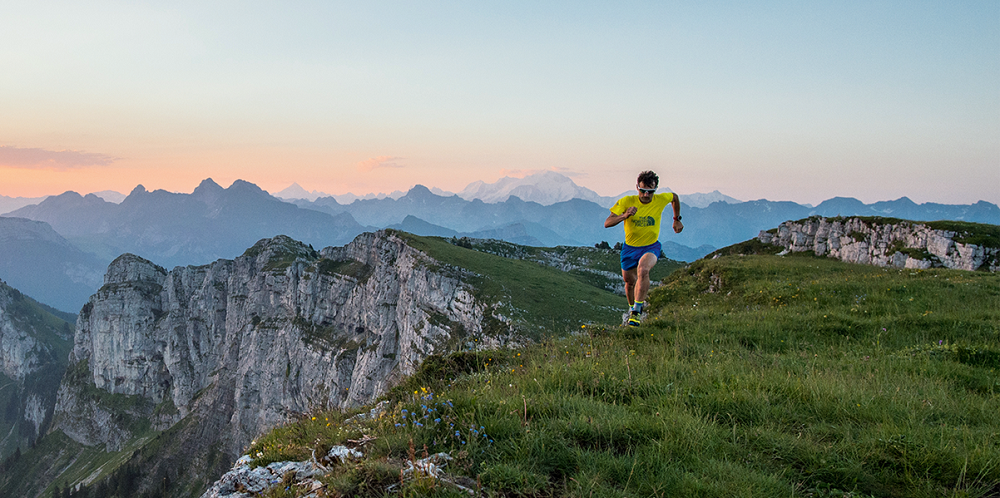
Step One: Choose Light Shoes
The average running shoe is designed for people who aren’t running cross country. That’s just a fact. These shoes are designed to protect the average person’s foot with a lot of extra support and even more extra cushioning. All of that makes it hard for the shoe to flex the way that cross country runners need them to flex, and this results in a definitive alteration in the runner’s stride. An alteration that negatively affects the running prowess of cross-country athletes.
The first thing the cross country athlete should do then is to break away from these ordinary running shoes. They’re not for them. Instead, they should choose a lightweight shoe that’s capable of flexing and allows the cross country athlete to better feel the ground. Although the average person shouldn’t try to use cross country shoes due to an increased risk of injury, cross country shoes can use the shoes without injury quite well.
Step Two: Choose Larger Shoes
The next thing that the consumer should do is to choose shoes that are a bit larger than what they may wear for day-to-day use. That’s because the runner’s feet swell while they’re running, so they should make sure to account for that extra swelling by buying shoes a half-size larger than normal. This will allow for the most comfortable fit while running.
Step Three: Choose Shoes With An Increased Grip
The next thing the runner should think about is the grip that the shoe provides them. Some of the best cross country shoes have either spikes or larger lugs that help to grip the ground. These shoes allow them to give the cross-country runner more traction on soft, loose or uneven ground conditions.
If the runner is thinking about shoes with spikes, however, they should keep in mind that these shoes aren’t acceptable for all running situations. They should also keep in mind that if they’re a high-school or collegiate cross country runner, then some tournaments might not allow spikes to be used by the runners.
It’s also worth mentioning that spikes also place an additional strain on the runner’s legs and feet. Running with spikes disproportionately places pressures on the calves and tendons of the runner. A condition made worse if the cross country course covers some pavement as well as soft ground. And runners who are just now transitioning into cross country racing should try to avoid spikes altogether—at least until they have developed their legs for several years using spike-less cross country shoes.
Step Four: Think About Additional Features
Once the previous three features have been considered, it’s time to think about some of the other features that runners might want to consider before they put down good money on a new pair of cross country running shoes. Let’s take a few moments to consider these additional features before we leave our readers with some additional tips for cross country runners.
- Ortholite Sock Liners
- Quick Lacing Systems
- Rubber Versus Synthetic Soles
Some Additional Tips For Cross Country Runners
Okay, before this guide comes to its logical conclusion, we would like to give cross-country runner a few other tips that will enable them to not only buy a shoe that works for them but also allows them to get the most out of that shoe. Having said that, below are a few things that the cross-country runner should think about.
Think About The Gait
Cross country runners should consider their gait. If they overpronate or underpronate, then they might want to purchase getting a specialty cross country shoe. However, if the consumer doesn’t have these issues, they can go ahead and choose a shoe with a neutral gait. If the runner is unsure whether or not they have an issue with their gait, they can always do a gait analysis to find out for sure.
Function Is More Important Than Fashion
Sure, running shoes come in a variety of cool designs and colors, but the cross country runner should be sure to focus their attention specifically on how the shoe functions. After all, who cares about looks when you’re putting in miles and miles of running? Every cross-country runner should do themselves a favor and choose the shoes that work the best for them.
